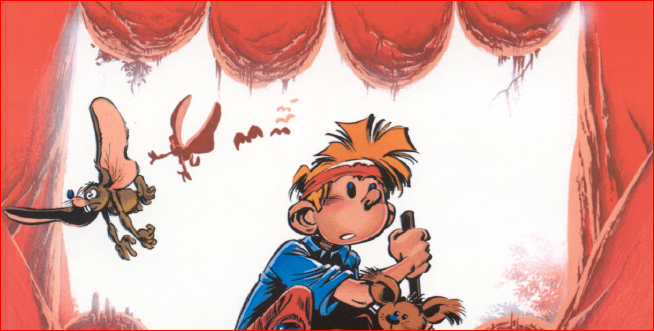
After many years of living in Berlin, I finally managed to bring over my comic book collection. Like practically any Belgian kid, I used to be pretty hardcore about collecting these – and even though I later moved over to manga and US comics, my old collection still holds a special place in my heart.
Back then, I mainly had a thing for Spirou and Fantasio (or Robbedoes en Kwabbernoot as they were awkwardly called in Dutch). These adventures, who reached fame penned by the legendary Franquin, simply spoke to me, and I devoured them endlessly. Later, as the characters drove Franquin into depression and he moved on to other projects that were no less brilliant, other artists took over with varying success. Along with the artist, the art style and the adventures changed.
When I was a kid, these artists were Tome and Janry. I loved what they came up with. Along with them, they sent Spirou fighting against a robotized Marylin Monroe, changed the colour of his skin, sent him to a mob-overrun post-iron-curtain Moscow… and into the Vallée des Bannis.
That was my favourite album. In it, Fantasio would get stung by a poisonous mosquito, which rendered him uncontrollably aggressive. Suddenly, the friends became sworn enemies, as Fantasio was sick of standing in the hero’s shadow. If Spirou were to die, Fantasio would be the hero instead of the underdog! Of course, ultimately, friendship conquered all. Spirou and Fantasio were, after all, best friends. But it was the way Tome and Janry chose to frame it that made it special.

I had never seen anything like it. There was no text – only a highly cinematic piece of visual storytelling. Up to that point, I had seen comics as novels with pictures in them, where text balloons were used to get a point across. But that one page changed the way I thought about comics for ever.
And it continues to do so to this very day.



